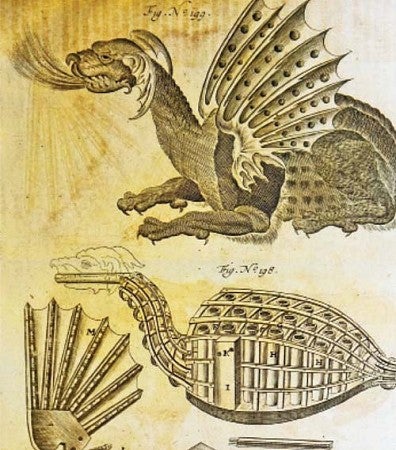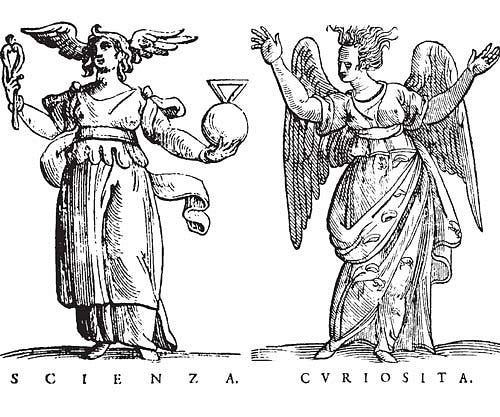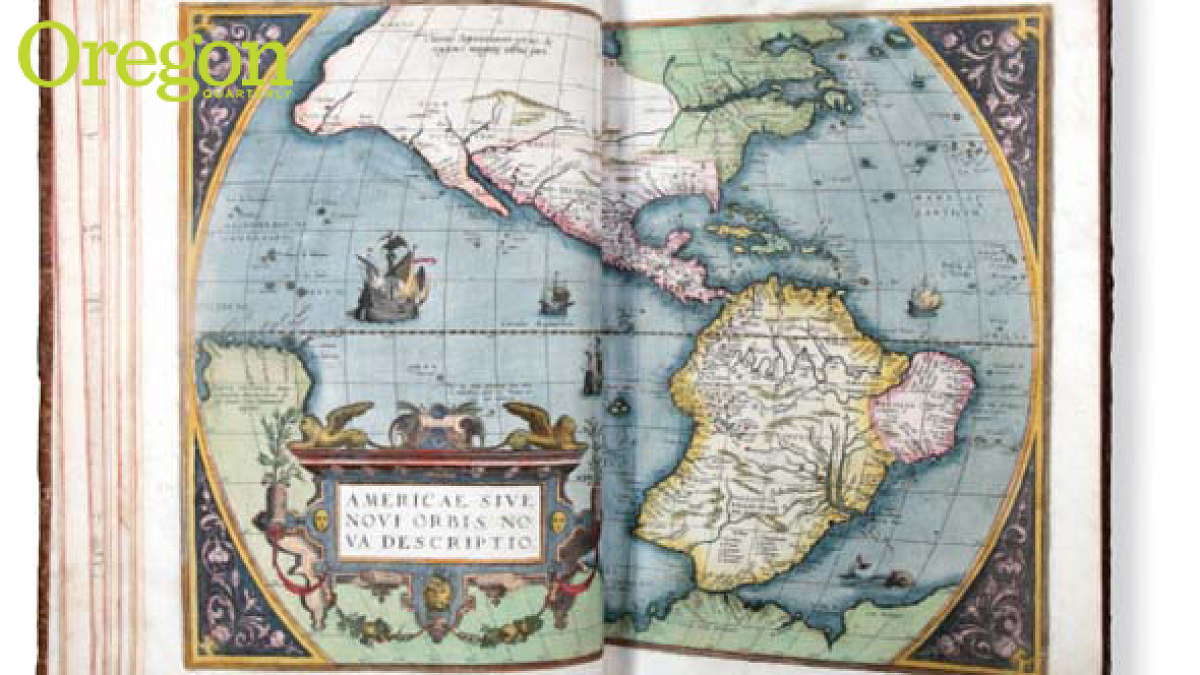Poor curiosity! It has such a checkered past, and yet we owe it so much. At the start of the European Renaissance in the 1400s, curiosity was a vice. It meant the desire to know, to look, listen, explore, and question when one should not. "Curious science" was then a contradiction in terms. How could science ever team up with her maligned little sister, curiosity? The story of curious science unfolds within Knight Library's Special Collections and University Archives.

By contrast, curiosity, "a frenzied desire to know more than one should" (as Cesare Ripa wrote), rushed about. The many eyes and ears dotting her dress in Ripa's image pointed to her constant prying into the secrets of this world. Her wild hair and wings symbolized "vivacious thoughts" always flying toward the latest exciting news.
Today, we would picture science quite differently. We think of experiment, not metaphysics, as the foundation upon which science rests. Experiment, however, used to mean nothing more than "experience" (from Latin, experimentum). To the science of the time, experience was inconstant and thus unreliable. The always-changing world of experience could not offer a stable basis upon which to build trustworthy science. Curiosity, though, thrived on experience.
The invention of print in the 1450s stoked curiosity's desire to know, as it granted readers experiences of the entire globe. In the most authoritative books of the time, the seas swam with monsters, and all sorts of people roamed the earth. Nature grew most inventive, it seemed, in far distant lands.

The curious turned from building machines that worked like animals to investigating the hidden workings of animals as though they were machines.
Figures such as Sir Francis Bacon (1561–1626) argued that science should not stand still, but advance through a constant journey of discovery in unknown lands. In his Advancement of Learning, he attacked those who saw "aspiring to over-much knowledge" as mankind's original sin. He hinted, rather, that mankind might enjoy a continual increase in knowledge. The title page of his book showed a wide-ranging ship with the motto (adapted from Daniel 12:4), "Many shall travel to and fro, and science shall be enlarged."
Secrets were indeed revealed. New tools, such as microscopes and telescopes, allowed the eyes of the curious to reach farther than they ever had before. They found that the world was truly swimming with monsters.
, Table VI. RBC QP 301.B6 1680 v. 1. and, William Borlase, Natural History of Cornwall (Oxford: Jackson, 1758), 239, 254. RBC x QH138.C8 B7 Detail from Giovanni Alfonso Borelli, De motu Animalium [On the Motion of Animals](Rome: Bernabò, 1680), Table VI. RBC QP 301.B6 1680 v. 1. and, William Borlase, Natural History of Cornwall (Oxford: Jackson, 1758), 239, 254. RBC x QH138.C8 B7](/sites/default/files/styles/custom_xl/public/photo_feature_keller-06.jpg?itok=UjIoP8ga)
In today's professionalized science, it is easy to dismiss the merely curious. Let's not forget that it was curiosity that made science what it is now.
Buried Treasure
This past year, I have been discovering a treasure in my own backyard. I already knew that Knight Library's Special Collections and University Archives were, indeed, something special. For the past few years, my honors college students and I have pored over items and artifacts from past millennia, from ancient cuneiform tablets to a stupendous thirteenth-century Bible fit for a princess, written on the very fine skins of newborn calves ("Eeeuw!" my undergraduates always squeal). I had no idea, however, about the depths of the rare books collection—until last spring. It was then that I had the idea to work with my students on an exhibition drawn from the collection in my particular areas of expertise—the origins of modern, experimental science in the 17th century and the history of the book. Books, like other forms of communication, have the power to shape knowledge. Different forms of the book not only frame how questions are asked and answered, but by whom. The printing process invented in the 1450s was a game changer. I knew that physically handling books from the first centuries of print would help my students come to grips with the massive changes in science wrought in that era. When I mentioned the idea of an exhibit to James Fox, the invaluably helpful head of Special Collections, he hinted that, as I no doubt knew, many works were not in the catalog. Nooo, I did not know. Soon, I was behind the scenes with members of his staff, gasping. The shelves groaned with the greatest hits of the Scientific Revolution. My students and I dove into volumes now four or five centuries old, but more exhilarating than ever. The results of our work yielded the exhibit Printing Science, on display at the Knight Library from this past June through October. The images presented here reflect that exhibit and, like it, are drawn from Knight Library's buried treasure.
—By Vera Keller
Vera Keller is an assistant professor of history in the Robert D. Clark Honors College at the UO. She specializes in the history of experimental science.
Special thanks to Special Collections and University Archives for the kind permission to reproduce the images included in this article. Donations to help care for the UO's Special Collections may be made at this secure website, www.uofoundation.org/SpecialCollectionsFund.


